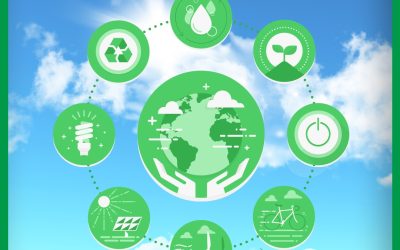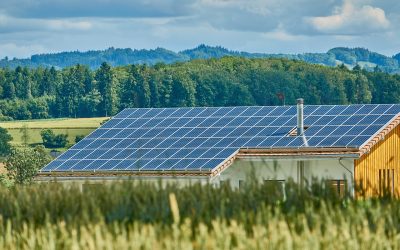Imagine a world where the air we breathe is pure and the water we drink is pristine. It’s a world where our environment thrives, and our health and wellbeing are prioritized. This is the vision behind the preservation of clean air and water. Ensuring the preservation of these precious resources is not just a responsibility we hold collectively, but an urgent imperative for our future. In this article, we will explore the importance of clean air and water, the threats they face, and the steps we can take to protect and preserve them for generations to come.
Importance of Clean Air and Water Preservation
Clean air and water are essential for maintaining a healthy and thriving environment for both humans and ecosystems. The significance of preserving clean air and water cannot be overstated, as they play a vital role in ensuring human health and well-being.
The significance of clean air and water for human health
Clean air and water are crucial for human health as they are essential components for life. Breathing clean air is necessary for the proper functioning of our respiratory systems, and clean water is vital for hydration and proper bodily functions. Polluted air can contain harmful particles and chemicals that can cause respiratory diseases such as asthma, bronchitis, and even lung cancer. Similarly, contaminated water can lead to various waterborne diseases such as diarrhea, cholera, and hepatitis.
In addition to physical health, clean air and water also contribute to mental well-being. Studies have shown that exposure to polluted air and water can have adverse effects on mental health, including increased stress levels, decreased cognitive function, and impaired learning abilities. Therefore, ensuring clean air and water is crucial for promoting and maintaining overall human health.
Effects of polluted air and water on ecosystems
Polluted air and water not only pose a threat to human health but also have severe repercussions on ecosystems. Air pollution can negatively impact plant and animal life through the deposition of harmful chemicals and particles, leading to reduced growth, impaired reproduction, and increased susceptibility to diseases. Furthermore, air pollution also contributes to the acidification of lakes and forests, causing significant damage to aquatic life and ecosystems dependent on them.
Similarly, water pollution can have devastating effects on aquatic ecosystems. Chemical pollutants, including pesticides, industrial waste, and untreated sewage, can contaminate water sources, leading to the death of fish and other aquatic organisms. Pollution also disrupts the delicate balance of ecosystems, causing a decline in biodiversity and the loss of habitats for many species.
Link between clean air and water preservation and climate change
Preserving clean air and water is closely interconnected with efforts to combat climate change. The release of greenhouse gases, such as carbon dioxide and methane, contributes to both air pollution and climate change. Fossil fuel combustion, industrial emissions, and deforestation release significant amounts of these gases into the atmosphere, leading to global warming and the disruption of weather patterns.
Clean air preservation strategies, such as promoting renewable energy sources and implementing air pollution control measures, not only reduce air pollution but also help mitigate climate change. By transitioning to cleaner forms of energy, such as solar and wind power, we can significantly decrease greenhouse gas emissions and combat climate change. Additionally, preserving water sources and implementing water conservation practices also contribute to climate change mitigation, as water scarcity and droughts are exacerbated by global warming.
Sources of Air and Water Pollution
In order to effectively preserve clean air and water, it is essential to understand the main sources of pollution. Identifying and addressing these sources is crucial for implementing appropriate strategies and regulations to minimize pollution.
Industrial emissions
Industrial activities are a significant contributor to air and water pollution. Manufacturing processes, power generation, and the release of toxic chemicals from factories and industrial facilities release harmful pollutants into the air and water. These pollutants include sulfur dioxide, nitrogen oxides, volatile organic compounds, heavy metals, and other hazardous substances. Strict regulations and emissions control technologies are necessary to prevent or minimize industrial pollution and its detrimental effects on air and water quality.
Vehicular pollution
The transportation sector, particularly the use of fossil fuel-powered vehicles, is a major source of air pollution. Combustion engines release harmful pollutants such as carbon monoxide, nitrogen oxides, and particulate matter into the atmosphere. These pollutants contribute to the formation of smog and respiratory diseases. Encouraging the use of sustainable transportation alternatives, such as electric vehicles and public transportation, can significantly reduce vehicular pollution and preserve clean air.
Agricultural activities
Agricultural activities, including the use of pesticides, fertilizers, and animal waste, can result in water pollution. Runoff from agricultural fields can carry harmful chemicals and excess nutrients, such as nitrogen and phosphorous, into water bodies, leading to eutrophication and the degradation of water quality. Implementing sustainable farming practices and promoting organic agriculture can minimize water pollution from agricultural activities.
Waste disposal practices
Improper waste disposal practices, including the dumping of solid waste and the improper treatment of wastewater, can lead to significant air and water pollution. Landfills produce methane, a potent greenhouse gas, and can contaminate air and groundwater if not properly managed. Similarly, untreated sewage and effluents from industries can pollute water sources and pose risks to human health and ecosystems. Adopting sustainable waste management practices, such as recycling, waste reduction, and proper wastewater treatment, is essential for minimizing pollution and preserving clean air and water.

Clean Air Preservation Strategies
Preserving clean air requires a multi-faceted approach that combines regulatory measures, technological advancements, and the promotion of sustainable practices. Here are some strategies to ensure clean air for present and future generations.
Promotion of renewable energy sources
One of the most effective strategies for clean air preservation is the promotion and adoption of renewable energy sources. Transitioning from fossil fuels to renewable energy sources, such as solar, wind, and hydroelectric power, reduces greenhouse gas emissions and decreases air pollution. Increased investment in renewable energy infrastructure, as well as the implementation of favorable policies and incentives, can accelerate the shift towards a cleaner and more sustainable energy system.
Air pollution control measures
Implementing air pollution control measures is crucial for reducing emissions from industrial facilities, power plants, and other pollution sources. These measures include the installation of emission control technologies, such as scrubbers and filters, to remove pollutants before they are released into the air. Additionally, establishing stringent emission standards and regularly monitoring and enforcing compliance can help minimize air pollution. Collaboration between industries, regulatory agencies, and environmental organizations is essential to ensure the effective implementation of air pollution control measures.
Encouraging sustainable transportation
The transportation sector is a significant contributor to air pollution, particularly from fossil fuel-powered vehicles. Encouraging sustainable transportation alternatives, such as electric vehicles, bikes, and public transportation, can significantly reduce vehicular emissions and improve air quality. Investing in infrastructure to support sustainable transportation, including the development of charging stations for electric vehicles and the construction of bike lanes, can further promote the adoption of cleaner modes of transportation.
Water Preservation Strategies
Preserving clean water is crucial for safeguarding human health and maintaining the integrity of ecosystems. Implementing effective water preservation strategies can help ensure the availability of clean and safe water for current and future generations.
Protecting water sources from contamination
Preventing contamination of water sources is essential for maintaining clean water. Protecting watersheds, wetlands, and other natural habitats helps preserve the quality of source water and reduce the risk of pollution. Establishing buffer zones around water bodies and implementing land use policies that prioritize water protection can help prevent agricultural runoff and the release of harmful pollutants into water sources.
Implementation of wastewater treatment systems
Proper treatment of wastewater is crucial for preventing water pollution. Wastewater treatment systems remove contaminants from domestic, industrial, and agricultural wastewater before it is discharged into water bodies. Advanced treatment technologies, such as biological treatment processes and membrane filtration, can effectively remove pollutants and ensure the quality of treated wastewater. It is essential to invest in wastewater treatment infrastructure and enforce regulations to ensure the proper management of wastewater and prevent water pollution.
Promotion of water conservation practices
Promoting water conservation practices is essential to minimize water waste and ensure sustainable water use. Encouraging individuals, businesses, and industries to practice water-efficient behaviors, such as fixing leaks, using water-saving appliances, and implementing rainwater harvesting systems, can help conserve water resources. Education and awareness campaigns on water conservation, as well as the establishment of water-saving incentives and regulations, can further promote responsible water use and preservation.

Government Policies and Regulations
Government policies and regulations play a crucial role in preserving clean air and water. By establishing and enforcing environmental protection laws, governments can ensure that industries, businesses, and individuals operate in a manner that minimizes pollution and safeguards the environment.
Environmental protection laws
Environmental protection laws establish the legal framework for regulating and managing air and water pollution. These laws set standards for emissions, prescribe penalties for non-compliance, and provide guidelines for pollution control measures. They also outline the responsibilities of various stakeholders, including industries, regulatory agencies, and individuals, in preserving clean air and water. Regular review and updates of environmental protection laws are necessary to keep pace with advancements in technology and scientific understanding.
Regulation of industrial emissions
Government regulations play a crucial role in regulating industrial emissions and controlling air pollution from industrial sources. Establishing emission standards, issuing permits, and conducting regular inspections and audits are essential for ensuring compliance and reducing industrial pollution. Collaboration between regulatory agencies, industries, and environmental organizations is necessary to effectively implement and enforce regulations regarding industrial emissions.
Water pollution control standards
Similarly, governments establish water pollution control standards to regulate and manage the discharge of pollutants into water bodies. These standards outline permissible levels of contaminants and establish monitoring and reporting requirements for industries, wastewater treatment plants, and other pollution sources. Regular inspections and sampling are conducted to ensure compliance with water pollution control standards. Governments also establish penalties for non-compliance and provide incentives for industries and individuals to adopt practices that minimize water pollution.
Role of Technology in Clean Air and Water Preservation
Technological advancements play a crucial role in clean air and water preservation by providing innovative solutions for monitoring, controlling, and mitigating pollution. Here are some technological approaches that contribute to the preservation of clean air and water.
Air and water quality monitoring systems
Advanced monitoring systems allow for real-time monitoring and analysis of air and water quality parameters. These systems collect data on pollutants, temperature, humidity, and other relevant factors, providing valuable information for pollution control and decision-making. Remote sensing technologies, satellite imagery, and sensor networks enable comprehensive monitoring of large areas and help identify pollution sources. The data collected through these monitoring systems help in the formulation of effective policies and interventions to preserve clean air and water.
Advanced filtration and purification technologies
Technology has significantly advanced filtration and purification processes, enabling the removal of pollutants and contaminants from water and air. Advanced filtration systems, such as activated carbon filters, membrane filtration, and reverse osmosis, effectively remove particles, chemicals, and microorganisms from water sources, ensuring clean and safe drinking water. Similarly, air filtration technologies, including electrostatic precipitation and high-efficiency particulate air (HEPA) filters, remove particulate matter and harmful gases from indoor and outdoor air, improving air quality.

Community Initiatives and Education
Engaging communities and raising awareness about the importance of clean air and water preservation are crucial for fostering a sense of responsibility and encouraging sustainable practices.
Encouraging responsible waste management
Communities can contribute to clean air and water preservation by adopting responsible waste management practices. Proper waste segregation, recycling, and composting help reduce the amount of waste sent to landfills and minimize the release of pollutants into the environment. Community initiatives, such as waste collection drives, recycling programs, and awareness campaigns, can encourage individuals to actively participate in waste management and contribute to a cleaner environment.
Awareness campaigns on clean air and water preservation
Education and awareness campaigns play a vital role in promoting clean air and water preservation. Informing individuals about the impacts of pollution on human health and ecosystems can help motivate them to take action and make informed choices. School programs, community workshops, and public awareness campaigns can provide information on pollution prevention, sustainable practices, and the importance of preserving clean air and water. Collaboration between government agencies, non-profit organizations, and educational institutions is crucial for the effective implementation of these initiatives.
International Collaboration for Environmental Protection
Preserving clean air and water requires global cooperation and collaboration. International agreements and treaties provide a platform for countries to come together and establish common goals and standards for environmental protection.
Environmental agreements and treaties
International environmental agreements, such as the Paris Agreement and the Kyoto Protocol, aim to address climate change and promote sustainability. These agreements encourage countries to reduce greenhouse gas emissions, invest in renewable energy, and adopt sustainable practices to mitigate climate change and preserve clean air and water. By participating in these agreements, countries commit to working together to achieve common environmental goals.
Sharing best practices for clean air and water preservation
International collaboration allows for the sharing of best practices and lessons learned in clean air and water preservation. Countries can exchange knowledge, technologies, and expertise to develop innovative solutions and strategies for pollution control and prevention. Collaborative initiatives, research partnerships, and technical exchanges facilitate the transfer of knowledge and promote global efforts in preserving clean air and water.
Challenges in Clean Air and Water Preservation
Preserving clean air and water faces several challenges that need to be addressed to ensure sustained environmental protection.
Balancing economic growth and environmental protection
One of the main challenges in clean air and water preservation is the need to balance economic growth with environmental protection. Industries and businesses often prioritize economic development over environmental considerations, leading to increased pollution and degradation of air and water quality. Finding a balance between economic activities and environmental sustainability requires careful planning, the implementation of stringent regulations, and the promotion of sustainable practices that minimize pollution and resource use.
Addressing pollution from developing regions
Developing regions often face significant challenges in addressing air and water pollution due to limited resources and infrastructure. Rapid urbanization and industrialization without adequate pollution control measures can lead to severe pollution levels and adverse health impacts. International support and collaboration are crucial in assisting developing regions in implementing effective pollution control measures and sustainable development practices. Technology transfer, capacity building, and financial assistance can help these regions overcome the barriers to clean air and water preservation.
Managing emerging pollutants
The emergence of new pollutants, such as microplastics, pharmaceuticals, and emerging contaminants, presents a challenge in clean air and water preservation. These pollutants may have harmful impacts on human health and ecosystems, yet effective methods for their removal and mitigation may still be under development. Research and innovation are necessary to understand the risks associated with emerging pollutants and develop strategies to prevent their release into the environment. Additionally, regulatory frameworks need to be adapted to address these new challenges and ensure the preservation of clean air and water.
Future Outlook
The preservation of clean air and water remains a pressing global concern, and concerted efforts are needed to address the challenges and achieve long-term sustainability.
Continued research and innovation for sustainable solutions
Continued research and innovation are vital for developing sustainable solutions to preserve clean air and water. Investment in research and development can lead to the discovery of new technologies, materials, and processes that minimize pollution and enhance pollution control measures. Ongoing research into emerging pollutants and their impacts will also allow for targeted interventions to prevent their release into the environment. Collaboration between scientists, engineers, policymakers, and industry professionals is crucial for driving innovation and finding sustainable solutions.
Education and awareness as key drivers of change
Education and awareness play a pivotal role in driving change towards clean air and water preservation. By educating individuals, communities, and future generations about the importance of preserving clean air and water and empowering them with knowledge and tools to take action, we can create a collective commitment towards sustainability. Incorporating environmental education into school curriculums, organizing awareness campaigns, and engaging with communities can help foster a sense of responsibility and promote sustainable behaviors.
Preserving clean air and water is essential for the well-being of present and future generations. By understanding the significance of clean air and water for human health and ecosystems, identifying the sources of pollution, implementing effective strategies, and fostering international collaboration, we can work towards a future with cleaner air to breathe and safer water to drink. Taking collective action, embracing innovative technologies, and prioritizing sustainability can pave the way for a healthier and more sustainable planet.










